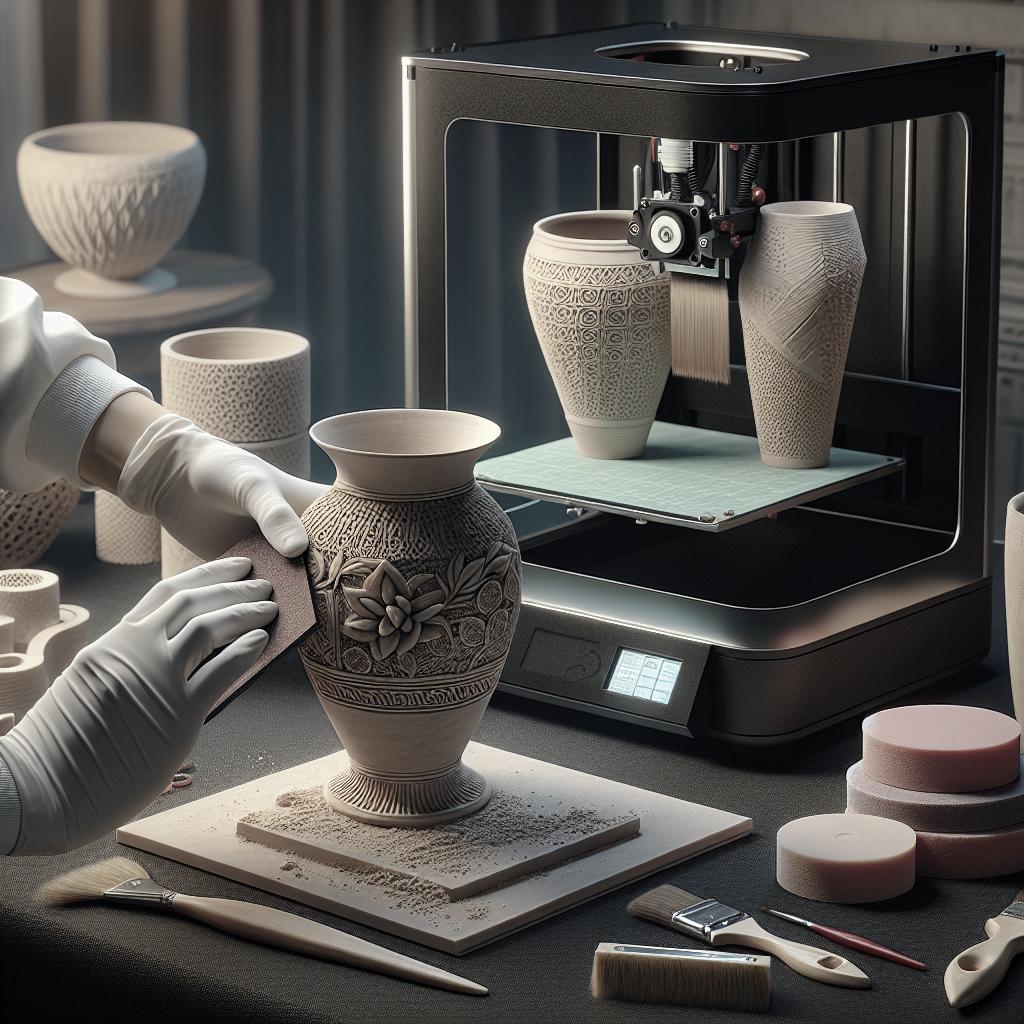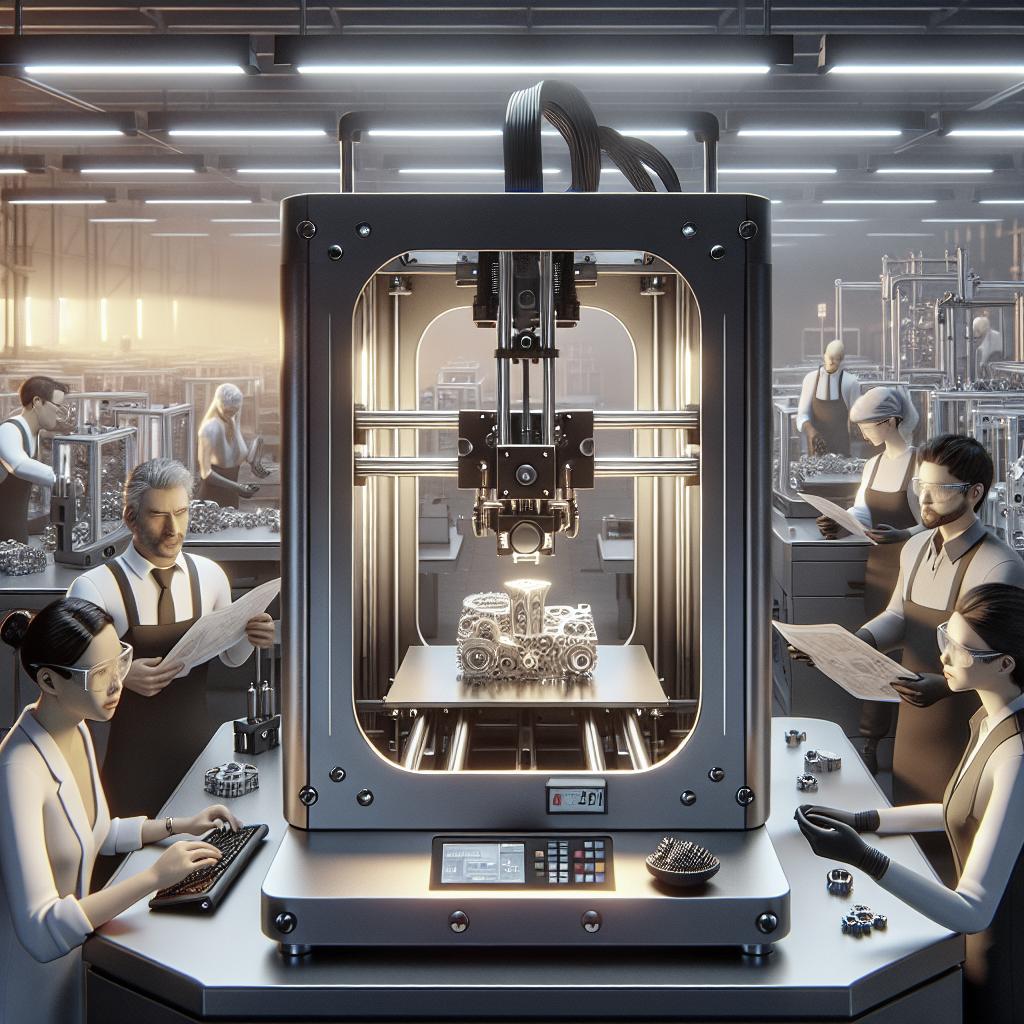<>
3D printing has revolutionized many industries since its inception, and ceramics is no exception. While the concept of 3D printed ceramics might seem futuristic, the technology is already here and opening up exciting new possibilities for artists, designers, and engineers alike. This blog post delves into the fascinating world of 3D printed ceramics, exploring how it works, and the innovative materials and processes involved. We’ll also look at the unique and stunning aesthetics that can be achieved with 3D printed ceramics. By breaking down each part of the process, we’ll give you a comprehensive understanding of this cutting-edge technology and inspire you to think about its potential applications.
How 3D Printing in Ceramics Really Works
3D printing in ceramics, also known as additive manufacturing, fundamentally involves creating objects layer by layer. Engineers and designers begin by developing a digital model using Computer-Aided Design (CAD) software. This digital model acts as the blueprint for the physical object. Once the design is complete, it gets sliced into thin cross-sections that guide the 3D printer concerning where to lay down the materials. Specialized 3D printers designed for ceramics follow these instructions, methodically depositing ceramic materials, usually in the form of a fine powder or slurry. The printer uses a binding agent to solidify the materials layer by layer until the complete object is formed. This approach ensures intricate designs and complex geometries that would be difficult, if not impossible, to achieve with traditional ceramic manufacturing techniques. Once the object is printed, it is usually not strong enough for most practical uses. Therefore, additional post-processing steps such as sintering or firing in a kiln are required to achieve the desired strength and durability. It’s a delicate and precise process that merges modern technology with traditional craftsmanship principles.
The Material: It’s All Based on Ceramic Powder
Ceramic 3D printing prominently revolves around the use of ceramic powder. These powders typically include materials like alumina, zirconia, and silicon carbide, each of which brings unique properties to the final product. Alumina offers excellent electrical insulation and thermal conductivity, making it ideal for electronic components. Zirconia stands out for its incredible toughness and resistance to wear, making it suitable for more durable applications. The choice of ceramic powder significantly affects the texture, color, and functional properties of the final product. Advanced ceramics are not just limited to basic pottery substances; technical ceramics allow for a wide range of industrial applications. For example, bio-ceramics are increasingly used in medical implants due to their biocompatibility. Customizing the type of ceramic powder opens a multitude of doors in various fields, from home decor and art to industrial and aerospace applications. As the technology advances, so does the range of available materials, continually broadening the scope of what can be achieved with 3D printed ceramics.
The Ceramics Printing Process: A Number of Careful Steps
Creating a 3D printed ceramic object involves several meticulous stages. It all begins with the design phase, where a digital model of the object is created. This design is then converted into a format that the 3D printer can understand. Once the printer has its marching orders, it begins the additive manufacturing process, laying down layers of ceramic material according to the specifications in the digital design. Next comes the binder application, where a liquid binding agent is selectively sprayed to solidify the ceramic powder layer by layer. This step is crucial for ensuring the object’s structural integrity. After printing, the object, often referred to as a “green body,” is fragile and must undergo careful handling. The final, but perhaps most critical, stage is the sintering or firing process. This involves heating the object in a high-temperature kiln to remove any remaining binder and solidify the ceramic particles into a dense, robust material. This stage also determines the object’s final properties, such as its strength and resistance to heat. Any additional surface treatments, like glazing or further refinement, are also applied at this point to achieve the desired finish.
The Look & Feel of Ceramics
One of the most exciting aspects of 3D printed ceramics is the stunning array of textures and finishes that can be achieved. Depending on the ceramic powder and post-processing methods used, the final product can have various textures ranging from smooth and glossy to rough and matte. These finishes add a layer of tactile and visual appeal that is often difficult to replicate with other materials. Customization options are virtually limitless. Digital designs allow for incredible precision, enabling the creation of intricate patterns, detailed textures, and complex geometries. This has significant implications for industries relying heavily on aesthetics, like home decor, art, and fashion. Even the simplest ceramic objects can transform into high-end luxury items with the right design and finish. Furthermore, the ability to control the material’s properties during the printing and firing stages means that 3D printed ceramics can be tailored to meet specific functional needs. Whether you need a ceramic component for electrical insulation, heat resistance, or biocompatibility, the technology allows for levels of customization that are unattainable through traditional methods. The intersection of beauty and functionality makes 3D printed ceramics a promising area for ongoing innovation. “`
| Section | Summary |
|---|---|
| How 3D Printing in Ceramics Really Works | An introduction to the basic principles of 3D printing in ceramics, from digital design to layer-by-layer construction. |
| The Material: It’s All Based on Ceramic Powder | A look at the various ceramic powders used in 3D printing, ranging from alumina to zirconia, and their unique properties. |
| The Ceramics Printing Process: A Number of Careful Steps | Details on the multi-step process of creating a 3D printed ceramic item, including design, printing, and firing. |
| The Look & Feel of Ceramics | An exploration of the various aesthetic and functional finishes achievable with 3D printed ceramics. |


